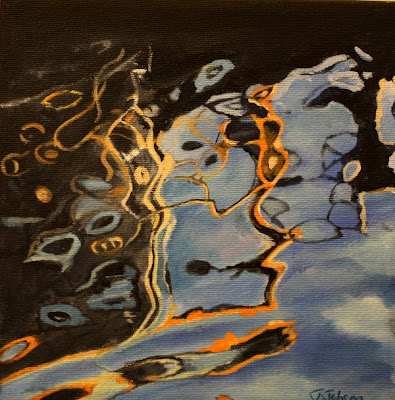Yamabuki
6" x 12" acrylic
June 8th is World Oceans Day. On World Oceans Day people around the planet celebrate and honor the body of water which links us all, for what it provides humans and what it represents.
It seemed appropriate that this little golden fish represent the importance of the oceans. Yes, its not sea dwelling, but water, even fresh, eventually becomes part of the ocean and the hydrological cycle repeats over and over.
The term nishikigoi in Japanese means "colored carp" and refers to the magical realm of koi fish. The Japanese invest symbolism in many animals and especially koi carp, the common goldfish being the domestic version of carp. Yamabuki: The gold fish represents gold, wealth and prosperity.
Wealth is not always measured by physical goods and money. Wealth comes from what is around us naturally, how we treat it and how we treat ourselves and others.


















































